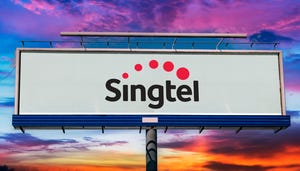
SAN FRANCISCO -- Discussion of the Internet of Things (IoT) typically focuses on the benefits and convenience of ubiquitous connectivity -- the idea that more connected devices can make people's lives easier. But what if that connectedness could also make us healthier?
That theory was floated here on a panel at the GigaOm Structure Connect event by Vijay Sammeta, chief information officer for the City of San Jose. In the midst of discussion with his fellow panelists about how more sensors deployed in cities can do things like cut the cost of operating streetlights and make it easier to find parking, Sammeta spoke up about what he believes to be the IoT's true potential.
"The real value of sensors and the IoT is healthcare," he said. "City data provides good early indicators for what's going on in communities that could have a profound impact on the population. It isn't the be all and end all, but it's a major player and contributor to healthcare initiatives."
What Sammeta was actually referring to, of course, was the analytics applied to the data collected by sensors in cities -- analytics that could help determine, for example, why people in a specific sector of an urban area are getting sick more frequently. (More pollution? More chemicals? More rats?) The ability to analyze that data, he said, is what makes all the sensors make sense.
"The cost of sensors is coming down at an exponential rate," Sammeta said. "The difference is the value you're driving out of the data -- the secondary benefits."
Want to understand the critical role analytics plays in the service provider world? Register to attend Light Reading's Telecom Analytics World event in Atlanta on November 11. And for more on the Internet of Things, check out the agenda for the Carrier IoT: Making Money From Machines event, also in Atlanta, on February 10.
Sammeta's fellow panelists -- representing Cisco Systems Inc. (Nasdaq: CSCO) and the Argonne National Laboratory -- concurred about the importance of analytics and how the ability to analyze collected data can reshape the way cities or companies operate and the services they provide. Cisco has itself recently added analytics capabilities to its video-based IoT security platforms, for example, with the aim of making the data collected from video surveillance more useful. (See Cisco Applies Analytics to IoT Video.)
The implication for all players involved in the IoT -- including operators of communications networks, whose role in the IoT is often unclear -- is that the value of the IoT is not just in the convenience of connected devices and sensors, but in the application of intelligence gleaned from all those "things." In a connected world, it's the data collected that can be the key to solving big problems.
"We're looking for indicators that will let cities move from reactive to proactive policy -- that will make cities more effective by using data," said Charlie Catlett, senior computer scientist at Argonne National Laboratory. "As cities put more sensors and thus more data out there, these analytics become more feasible."
— Jason Meyers, Senior Editor, Gigabit Cities/IoT, Light Reading
About the Author(s)
You May Also Like



.jpg?width=300&auto=webp&quality=80&disable=upscale)








